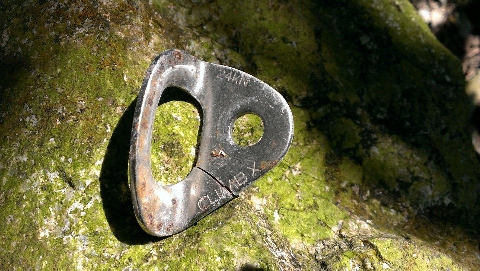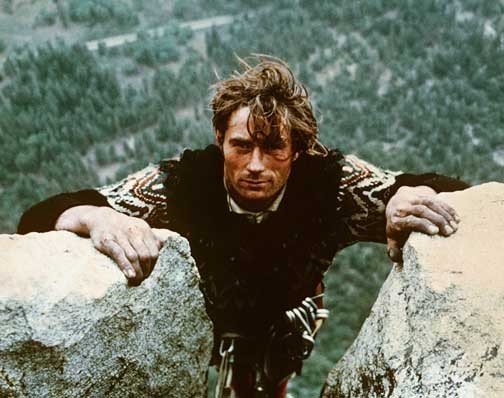 |
| Can you imagine clipping this? (Via http://www.adventurerock.com/sections/thescene/blog/the-humble-916th-wrench/) |
If you have been climbing for a while, you may recall encounters with fixed protection that was well past its sell-by date. Drooping,twisted soft-iron pitons with rings, rusted-out angles, rotten lost-arrows and a spectrum of lame bolts and half-assed hangers were par for the course. American ambivalence about fixed protection resulted in quite a variety of unsafe and ineffective methods and tools for installing bolts and pitons. In some areas, the ever-present threat of chopping made many reluctant to invest in high-quality protection. In the 21st century this began to change as an older generation and attitude gave way to a more pragmatic approach to the realities of the climbing environment. Things seemed settled for once.
 |
| A cracked hanger (image via Gripped and rockclimbing,com) |
Now comes word of cracked bolt-hangers from a poster at rockclimbing.com who put up some photos on one of the forums and then had the story picked up by Gripped Magazine's website. Obviously this story will develop over the coming weeks but the primary issue is that this failure, if confirmed, is in a device that is in many instances absolutely mission-critical, non-redundant and much less subject to the variables and stresses that say, an actual bolt in the rock or a cam might undergo. In other words, a modern hanger failure simply should not happen, ever. This makes me wonder about what's next.
As climbing expands as a sport, the likelihood of ever-increased use of fixed anchors expands as well. Now there is a UIAA standard for "rock anchors" that focuses on materials and strength tests. There are probably others that can be added such as the CWA and so on. However (and this follows only a cursory search) there appears to be a remarkable lack of publicly available rigorous current research on the subject of placing, assessing and maintaining fixed anchors in the field. Given the fact that there are many freelance bolters out there operating in a diverse range of rock types and environments, it seems logical that there will need to be a serious empirical field-based study of the performance of fixed anchors and any accessory gear including fixed draws, links etc to ascertain future best practices in the manufacturing, installing, and maintenance of these now-essential tools. Will there be a problem commissioning and funding such a study given its potentially controversial findings? As with the integrity of fixed climbing anchors themselves, only time will tell.
If you have suggestions on where to find publicly available, scientifically rigorous research as opposed to anecdotally-based accounts, please let me know. The ASCA is a good place to start but there seems to be room for improvement in terms of resources.





